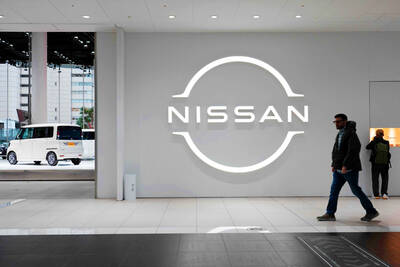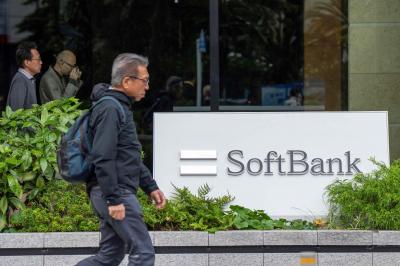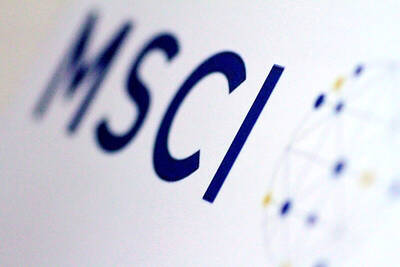From George Clooney to LeBron James, celebrities in the US have cashed in on tequila’s soaring popularity, but in Mexico, producers of the agave plant used to make the country’s most famous liquor are nursing a nasty hangover.
Instead of bringing a long period of prosperity for farmers of the spiky succulent, the tequila boom has created a supply glut that sent agave prices slumping.
Mexican tequila exports surged from 224 million liters in 2018 to a record 402 million last year, according to the Tequila Regulatory Council, which oversees qualification for the internationally recognized denomination of origin label.

Photo: AFP
The US, Germany, Spain, Canada, France, the UK, China, Australia, Colombia and Japan are the world’s top 10 consumers of the spirit.
Fast-rising demand initially led to a shortage of agave, forcing tequila producers to pay 35 pesos (US$1.72 at the current exchange rate) per kilo, said Francisco Javier Guzman, head of the Barzon Agavero organization of some 5,000 traditional tequila producers.
The problem is that the high prices lured more producers who planted agave “all over the place,” said Guzman, an 80-year-old farmer from the Los Altos region of the western state of Jalisco.
“Some people sold their factories, hotels, land and ranches to start growing agave,” he said.
The tequila boom was good news for Clooney and the other founders of Casamigos who sold their brand to British drinks giant Diageo PLC in 2017 in a deal worth up to US$1 billion.
Los Angeles Lakers star James threw his name and money behind the Lobos 1707 brand of tequila.
Even tech billionaire Elon Musk joined the party with the launch of a limited edition Tesla Tequila.
Amid the frenzy, the number of registered agave producers soared from 3,180 in 2014 to 42,200 last year, while areas under cultivation more than doubled between 2018 and 2023, Mexican government figures showed.
The ensuing oversupply has seen agave prices crash to an average of 8 pesos per kilo, producers said.
Traditional growers are urging buyers to pay about US$0.60 per kilo to at least cover their production costs, Barzon Agavero vice president Martin Franco said.
Their efforts are complicated by “coyotes” — intermediaries who take advantage of farmers’ desperation to buy agave for as little as US$0.10 per kilo.
The 25 percent tariffs that US President Donald Trump has pledged to impose on imports of Mexican goods unless the country does more to tackle illegal flows of migrants and drugs are another threat for the industry.
The US consumes about 85 percent of tequila with the denomination of origin label, “so of course I’m concerned,” Guzman said.
To counteract the coyotes, the Tequila Regulatory Council has launched a digital platform for traditional growers. It enables them to seek orders from tequila companies at prices that guarantee “reasonable profitability.”
At La Iberia, a bar in Jalisco’s state capital, Guadalajara, filled with the sound of mariachi music, manager Martin Martinez said that tequila prices have doubled over the past six years.
He said that he had been forced to reduce his profit margins to avoid losing customers.
Sipping a drink in the nearly 150-year-old establishment, customer Salvador Magana said he had seen no benefit from the agave production boom.
“If prices went down, the liquor should have been a bit cheaper, but no,” the 55-year-old said.

PERSISTENT RUMORS: Nvidia’s CEO said the firm is not in talks to sell AI chips to China, but he would welcome a change in US policy barring the activity Nvidia Corp CEO Jensen Huang (黃仁勳) said his company is not in discussions to sell its Blackwell artificial intelligence (AI) chips to Chinese firms, waving off speculation it is trying to engineer a return to the world’s largest semiconductor market. Huang, who arrived in Taiwan yesterday ahead of meetings with longtime partner Taiwan Semiconductor Manufacturing Co (TSMC, 台積電), took the opportunity to clarify recent comments about the US-China AI race. The Nvidia head caused a stir in an interview this week with the Financial Times, in which he was quoted as saying “China will win” the AI race. Huang yesterday said

Nissan Motor Co has agreed to sell its global headquarters in Yokohama for ¥97 billion (US$630 million) to a group sponsored by Taiwanese autoparts maker Minth Group (敏實集團), as the struggling automaker seeks to shore up its financial position. The acquisition is led by a special purchase company managed by KJR Management Ltd, a Japanese real-estate unit of private equity giant KKR & Co, people familiar with the matter said. KJR said it would act as asset manager together with Mizuho Real Estate Management Co. Nissan is undergoing a broad cost-cutting campaign by eliminating jobs and shuttering plants as it grapples

Japanese technology giant Softbank Group Corp said Tuesday it has sold its stake in Nvidia Corp, raising US$5.8 billion to pour into other investments. It also reported its profit nearly tripled in the first half of this fiscal year from a year earlier. Tokyo-based Softbank said it sold the stake in Silicon Vally-based Nvidia last month, a move that reflects its shift in focus to OpenAI, owner of the artificial intelligence (AI) chatbot ChatGPT. Softbank reported its profit in the April-to-September period soared to about 2.5 trillion yen (about US$13 billion). Its sales for the six month period rose 7.7 percent year-on-year

MORE WEIGHT: The national weighting was raised in one index while holding steady in two others, while several companies rose or fell in prominence MSCI Inc, a global index provider, has raised Taiwan’s weighting in one of its major indices and left the country’s weighting unchanged in two other indices after a regular index review. In a statement released on Thursday, MSCI said it has upgraded Taiwan’s weighting in the MSCI All-Country World Index by 0.02 percentage points to 2.25 percent, while maintaining the weighting in the MSCI Emerging Markets Index, the most closely watched by foreign institutional investors, at 20.46 percent. Additionally, the index provider has left Taiwan’s weighting in the MSCI All-Country Asia ex-Japan Index unchanged at 23.15 percent. The latest index adjustments are to